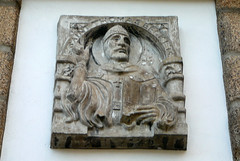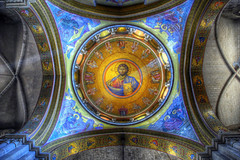 |
| Canterbury Cathedral Church of England |
The Canterbury Cathedral is the mother Church of the
Anglican Communion and seat of the
Archbishop of Canterbury. Its formal title is the
Cathedral and Metropolitical Church of Christ at Canterbury. The Cathedral is both a holy place and part of a
World Heritage Site. St. Augustine, the
first Archbishop of Canterbury, arrived on the
coast of Kent as a missionary to
England in 597 AD.
Augustine was given a church at
Canterbury by the local King Ethelbert, who’s
Queen Bertha, a
French Princess, was already a Christian.
Augustine's original building lies beneath the floor of the nave– it was extensively rebuilt and enlarged by the
Saxons, and following a major fire, the Cathedral was rebuilt completely by the
Normans in 1070. By 1077,
Archbishop Lanfranc had rebuilt it as a
Norman church, described as "nearly perfect". The work of the Cathedral as a monastery came to an end in 1540, when
the monastery was closed on the orders of
King Henry VIII. During the
Civil War of the 1640s,
The Canterbury Cathedral suffered damage at the hands of the
Puritans.

After
the Restoration in 1660, several years were spent in repairing the
building. The North West tower was found to be dangerous, it was
demolished in the early 1830s and replaced by a copy of the South West
tower, thus giving a symmetrical appearance to the west end of the
Cathedral. During the
Second World War,
the Precincts were heavily damaged by enemy action and the Cathedral’s
Library was destroyed. In 1954, the Library rebuilt and repairing War
damage was completed.
A critical moment in the history of
The Canterbury Cathedral was the murder of
Thomas Becket in the north-west transept (also known as the Martyrdom) on Tuesday 29 December 1170 by knights of
King Henry II. The king had frequent conflicts with the strong-willed
Becket
and is said to have exclaimed in frustration, "Who will rid me of this
turbulent priest?" The knights took it literally and murdered Becket in
his own
cathedral. Becket was the second, out of the four
Archbishops of Canterbury, who were murdered.
- New Archbishop Of Canterbury 'Appointed' (news.sky.com)













